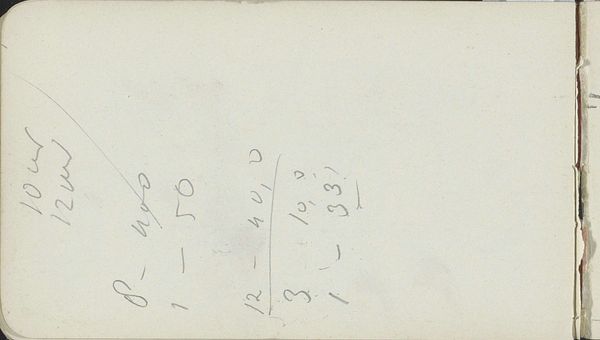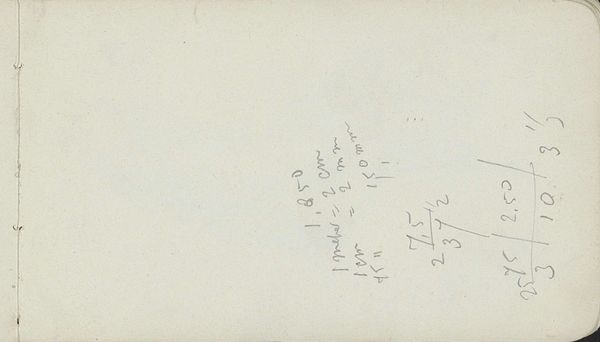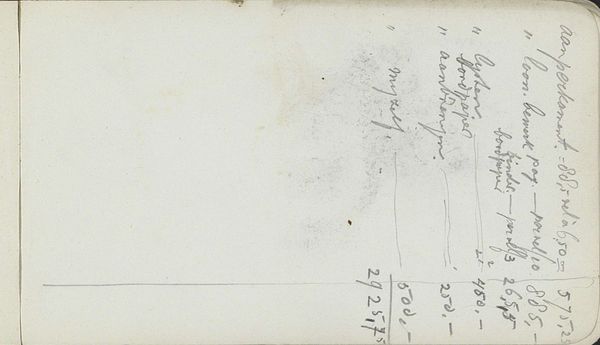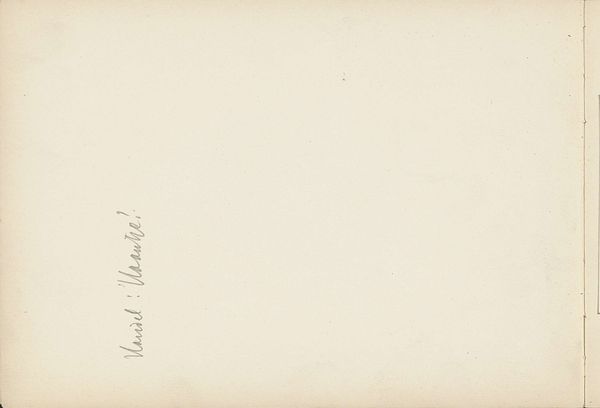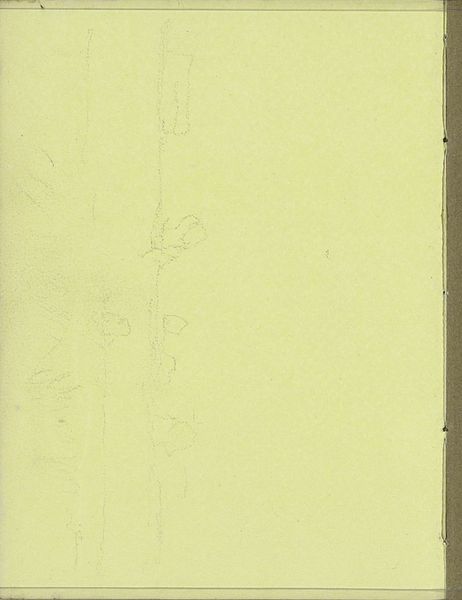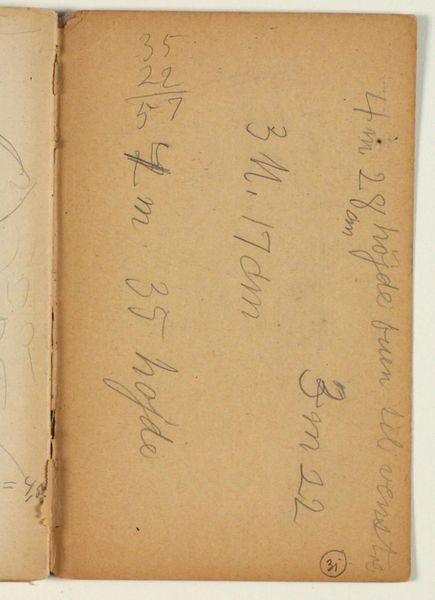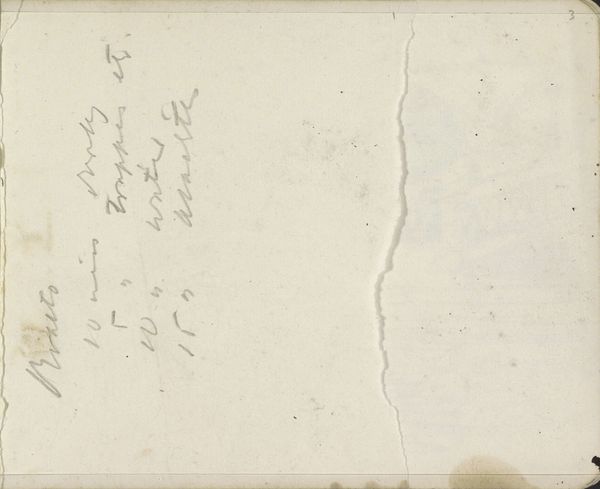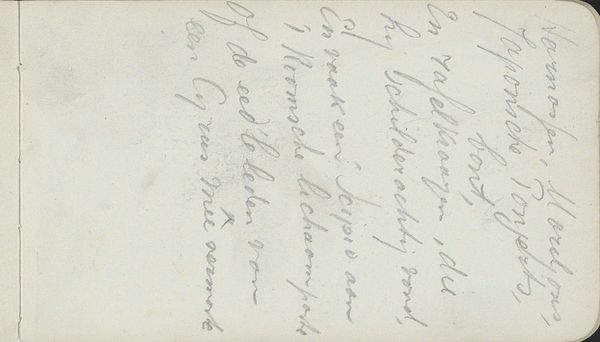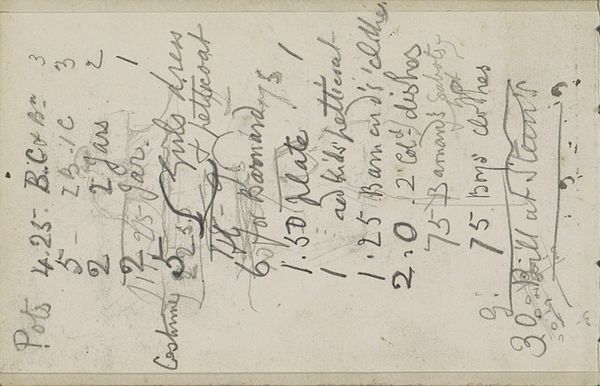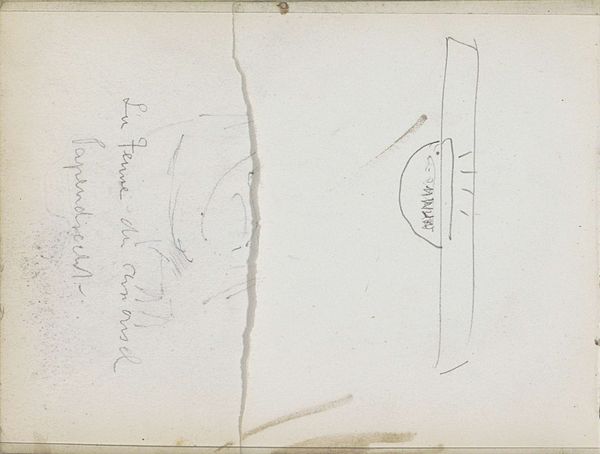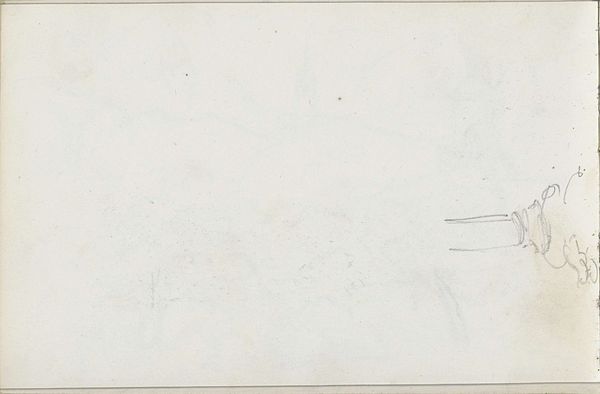
Copyright: Rijks Museum: Open Domain
Editor: So, this is *Berekeningen*, or "Calculations," by Carel Adolph Lion Cachet, made around 1905 or 1906. It’s an ink drawing on paper held at the Rijksmuseum. It's... minimalist, I guess? Just some handwritten numbers and symbols. What can you tell me about it? Curator: What a deceptively simple piece! These aren't just random numbers; they are symbols holding encoded information, perhaps acting as a mnemonic device for an artistic idea. How do they strike you emotionally? Editor: Emotionally? I don’t know…detached? Technical, maybe? Like notes for something else. Curator: Precisely! Consider how Cachet might have intended this "behind-the-scenes" glimpse. Artists often employ geometric forms and mathematical proportions to convey underlying harmony. What historical symbolism might numerical sequences evoke? Editor: Ummm…like the Golden Ratio, or maybe religious symbolism like the Trinity? Curator: Excellent. Notice also the texture of the paper itself. Its very presence evokes a specific time, a place of study or contemplation. Does that shift the feeling for you at all? Editor: I see what you mean. It's like finding a page torn from a sketchbook, hinting at a bigger picture, more complete and structured somewhere out there. A lost narrative. Curator: Yes, fragments! Numbers, divorced from the outcome of their equation, become cyphers themselves. It's about an unfinished act, a code seeking to be resolved. And that tension...that’s where the emotional weight resides. Editor: It’s amazing how much can be gleaned from something so simple. Now I see it’s more than just numbers on a page. Curator: Indeed! Sometimes, the smallest, seemingly insignificant symbols contain the grandest narratives and most compelling emotions.
Comments
No comments
Be the first to comment and join the conversation on the ultimate creative platform.
